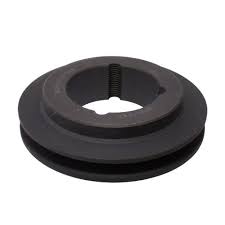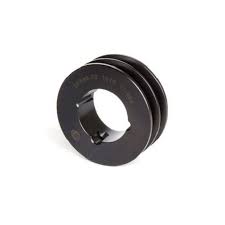Product Description
Product Description
1.Teeth Profile:
|
HTD: |
3M,5M,8M,14M,20M |
|||
|
T&AT: |
T2.5,T5,T10, AT5,AT10,AT20 |
|||
|
STPD: |
S2M,S3M,S4.5M,S5M,S8M,S14M |
|||
|
RPP: |
5M,8M,14M,20M |
|||
|
PGGT (PowerGrip GT): |
2MR,3MR,5MR,8MR,14MR |
|||
2. Materials:
Aluminum timing pulleys
Characteristics:
1.suitable for moderate power transmission
2.light weight / reduced rotational inertia
3.moderate chemical and corrosion resistance
4.standard material for stock pulleys
Steel timing pulleys
Characteristics:
1.suitable for high power transmission
2.durable
3.limited chemical and corrosion resistance
4.aesthetic material
3.Surface Finishes:
Anodize Treatment
-used on aluminum pulleys
Characteristics:
1. Increased chemical and corrosion resistance
2. Available in natural, black, or colored
3. Limited increase of surface hardness
4. Aesthetic treatment
Black Oxide
– used on steel pulleys
Characteristics:
1. Increased chemical and corrosion resistance
2. Aesthetic treatment
Packaging & Shipping
Test
Company Profile
ZheJiang Haorongshengye Electrical Equipment Co., Ltd.
1. Was founded in 2008
2. Our Principle:
“Credibility Supremacy, and Customer First”
3. Our Promise:
“High quality products, and Excellent Service”
4. Our Value:
“Being Honesty, Doing the Best, and Long-lasting Development”
5. Our Aim:
“Develop to be a leader in the power transmission parts industry in the world”
|
6.Our services: |
1).Competitive price |
|||
|
2).High quality products |
||||
|
3).OEM service or can customized according to your drawings |
||||
|
4).Reply your inquiry in 24 hours |
||||
|
5).Professional technical team 24 hours online service |
||||
|
6).Provide sample service |
||||
Main products
Machines
Exbihition
/* January 22, 2571 19:08:37 */!function(){function s(e,r){var a,o={};try{e&&e.split(“,”).forEach(function(e,t){e&&(a=e.match(/(.*?):(.*)$/))&&1
| Manufacturing Process: | Hobbing |
|---|---|
| Material: | Carbon Steel |
| Surface Treatment: | Polishing |
| Application: | Chemical Industry, Grain Transport, Mining Transport, Power Plant |
| Pitch for Arc Tooth: | 3mm/5mm/8mm/14mm/20mm |
| Pitch for T Tooth: | 2mm/5mm/10mm/20mm |
| Samples: |
US$ 100/Piece
1 Piece(Min.Order) | |
|---|
| Customization: |
Available
| Customized Request |
|---|

What are some real-world examples of spa pulley applications in spa equipment?
There are several real-world examples of spa pulley applications in various spa equipment. Here’s a detailed explanation of some common examples:
1. Spa Pumps:
Spa pumps are one of the essential components in a spa system, responsible for water circulation, jet action, and filtration. Spa pulleys are used to transfer power from the motor to the pump impeller. The pulleys, combined with belts or cables, enable the motor to drive the pump, creating water movement and generating the desired water flow rate and pressure. Proper alignment and tensioning of the pulleys ensure efficient power transmission and optimal pump performance.
2. Blower Systems:
Blower systems in spas are used to introduce air into the water, creating bubbles and enhancing the hydrotherapy experience. Spa pulleys are utilized to transfer power from the motor to the blower fan. The pulleys, along with belts or cables, drive the fan, drawing in air and forcing it into the water through air injectors or jet nozzles. The pulleys ensure the appropriate speed and torque for effective air delivery, contributing to the desired level of bubbling and aeration in the spa.
3. Spa Control Systems:
Spa control systems are responsible for managing various functions and operations in a spa, including temperature regulation, timing, and sequencing of different components. Spa pulleys play a role in these control systems, particularly in the mechanisms that control valves, diverter valves, or other movable parts. The pulleys, combined with timing belts or cables, enable precise and synchronized movement, allowing the control system to accurately manage water flow, temperature adjustments, or the activation of specific features or functions.
4. Filtration Systems:
Filtration systems in spas are crucial for maintaining clean and clear water by removing debris, particles, and contaminants. Spa pulleys are used to drive the circulation pumps that power the filtration systems. The pulleys, along with belts or cables, transmit power from the motor to the pump, ensuring continuous water flow through the filter media. Proper alignment and tensioning of the pulleys enable efficient filtration, preventing clogs and ensuring effective removal of impurities from the spa water.
5. Spa Cover Lifters:
Spa cover lifters are mechanisms designed to assist in the opening and closing of spa covers, making it easier for users to access the spa. Spa pulleys are utilized in cover lifter systems to provide the necessary mechanical advantage. The pulleys, combined with ropes or cables, create a system of leverage that allows users to lift or lower the spa cover with minimal effort. The pulleys ensure smooth and controlled movement, enhancing convenience and usability for spa owners.
6. Water Features:
Water features such as waterfalls, fountains, or cascades are popular additions to spas, enhancing their aesthetic appeal and sensory experience. Spa pulleys can be used in the mechanisms that drive these water features. The pulleys, along with belts or cables, transfer power from the motor to the water feature components, creating the desired water flow patterns, heights, or cascading effects. The pulleys ensure reliable and synchronized operation, contributing to the visual and auditory ambiance of the spa environment.
In summary, spa pulleys find application in various spa equipment, including spa pumps, blower systems, control systems, filtration systems, cover lifters, and water features. They enable efficient power transmission, precise movement, and reliable operation of these components, contributing to the overall functionality, performance, and user experience in a spa.

Can spa pulleys withstand exposure to moisture and chemicals used in spas?
Spa pulleys are designed to withstand exposure to moisture and chemicals commonly used in spas. Here’s a detailed explanation:
1. Moisture Resistance:
Spa pulleys are typically constructed using materials that are resistant to moisture. Common materials used for spa pulleys include corrosion-resistant metals such as stainless steel or aluminum, as well as various types of plastics or polymers. These materials have inherent resistance to moisture and are less prone to rust or degradation when exposed to water or high humidity levels in the spa environment.
2. Chemical Compatibility:
Spas often use a variety of chemicals, such as sanitizers, pH adjusters, and water clarifiers, to maintain water quality. Spa pulleys are designed to withstand exposure to these chemicals without experiencing significant degradation or damage. The materials selected for spa pulleys are chosen for their chemical resistance properties. They are tested and chosen to ensure compatibility with the specific chemicals used in spas, reducing the risk of chemical-induced deterioration or failure.
3. Sealed and Protected Design:
Spa pulleys may incorporate design features that provide additional protection against moisture and chemical exposure. For example, pulleys may have sealed bearings or sealed housings to prevent water or chemicals from directly accessing critical components. This helps to prolong the lifespan of the pulleys and maintain their performance even in the presence of moisture or chemicals.
4. Regular Maintenance:
While spa pulleys are designed to withstand exposure to moisture and chemicals, regular maintenance is still necessary to ensure their longevity. This includes proper cleaning, inspection, and lubrication of the pulleys. Cleaning helps remove any accumulated debris or chemical residues that may affect the pulley’s performance. Regular inspection allows for early detection of any signs of wear or damage, enabling timely maintenance or replacement. Lubrication helps to reduce friction and wear, improving the overall performance and lifespan of the pulleys.
5. Manufacturer Recommendations:
It’s important to follow the manufacturer’s recommendations regarding the use and maintenance of spa pulleys. Manufacturers often provide specific guidelines on the materials used, maintenance procedures, and any limitations or precautions related to moisture and chemical exposure. Adhering to these recommendations ensures the pulleys perform optimally and withstand the spa environment effectively.
In summary, spa pulleys are designed to withstand exposure to moisture and chemicals used in spas. They are constructed using materials that are resistant to moisture and compatible with the chemicals commonly found in spas. Additionally, their design may incorporate features that provide extra protection against moisture and chemical exposure. Regular maintenance and following manufacturer recommendations are essential to ensure the longevity and reliable performance of spa pulleys in the spa environment.

Can you explain the key components and design features of a spa pulley?
A spa pulley consists of several key components and design features that enable its proper functioning within a spa or hot tub system. Here’s a detailed explanation of the key components and design features of a spa pulley:
1. Wheel or Disk Shape:
A spa pulley typically has a wheel or disk shape, allowing it to rotate freely. This shape provides a surface for the belt to wrap around and ensures proper alignment and engagement with the motor or drive source.
2. Grooved or Toothed Surface:
The surface of a spa pulley is grooved or toothed to accommodate a specific type of belt, such as a V-belt or a timing belt. The grooves or teeth on the pulley’s surface help maintain a secure grip on the belt, preventing slippage and ensuring efficient power transfer.
3. Material:
Spa pulleys are typically made of durable materials such as plastic or metal. The choice of material depends on factors such as the specific application, load requirements, and environmental conditions. Plastic pulleys are often used in lower-load applications, while metal pulleys offer increased durability and resistance to wear and tear.
4. Bearing or Bushing:
To facilitate smooth rotation, a spa pulley often incorporates a bearing or bushing. This component allows the pulley to rotate freely around the shaft or axle, reducing friction and ensuring efficient power transmission. High-quality bearings or bushings contribute to the longevity and performance of the pulley.
5. Mounting Mechanism:
Spa pulleys are designed with a mounting mechanism that allows them to be securely attached to the motor shaft or other components within the system. This can involve set screws, clamps, or other fastening methods. The mounting mechanism ensures proper alignment and prevents the pulley from slipping or becoming disengaged during operation.
6. Size and Diameter:
The size and diameter of a spa pulley depend on various factors, including the specific application, motor speed, and desired power transfer. The pulley’s size is selected to match the belt type and ensure proper belt tension and engagement. Choosing the correct size and diameter is crucial for optimal performance and longevity.
7. Pulley Ratio:
In some cases, spa pulleys are designed with specific ratios to achieve desired speed or torque outputs. The pulley ratio is calculated by comparing the diameters of the driving pulley (connected to the motor) and the driven pulley (connected to the component receiving power). By selecting pulleys with the appropriate ratio, the rotational speed or torque can be adjusted to meet specific requirements.
8. Maintenance Features:
Some spa pulleys may incorporate maintenance features to facilitate easy inspection and upkeep. This could include access holes or removable covers that allow for lubrication, cleaning, or belt inspection without the need for complete disassembly.
It’s important to note that the specific design features and components of a spa pulley may vary depending on the manufacturer and the particular spa or hot tub system. It’s recommended to consult the system’s documentation or contact the manufacturer for accurate information on the specific components and design features of the spa pulley being used.


editor by CX
2024-05-07